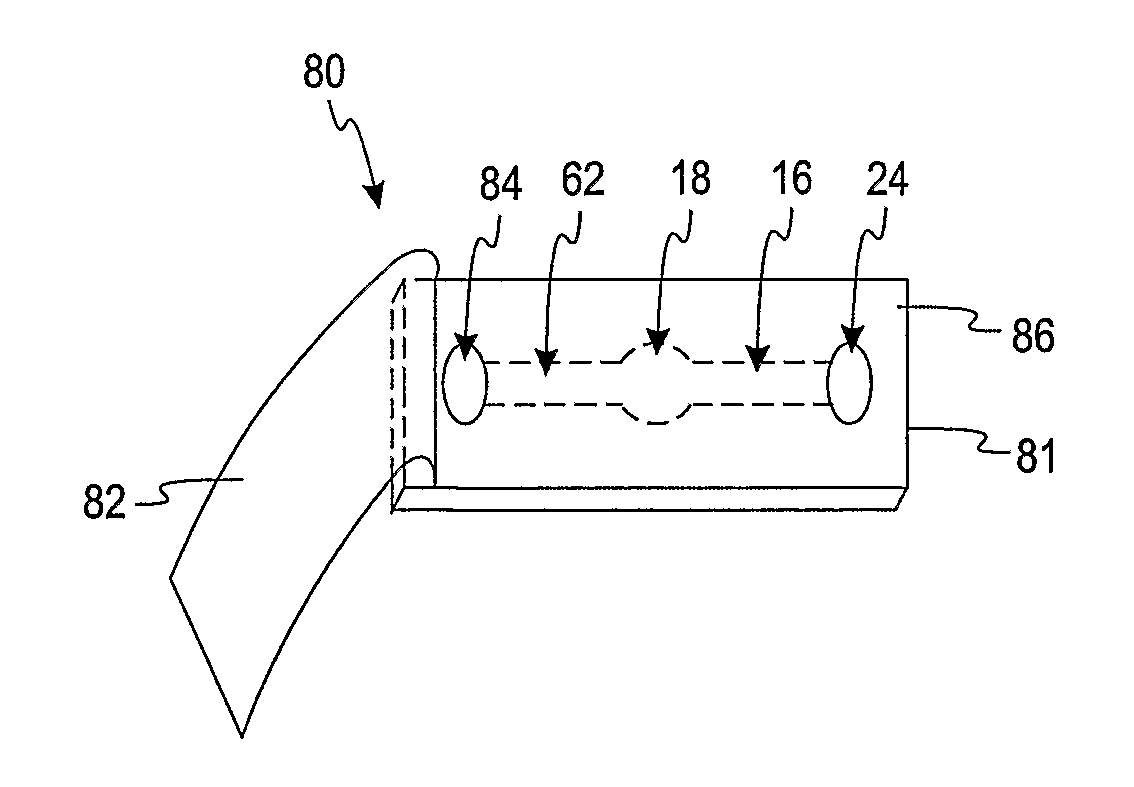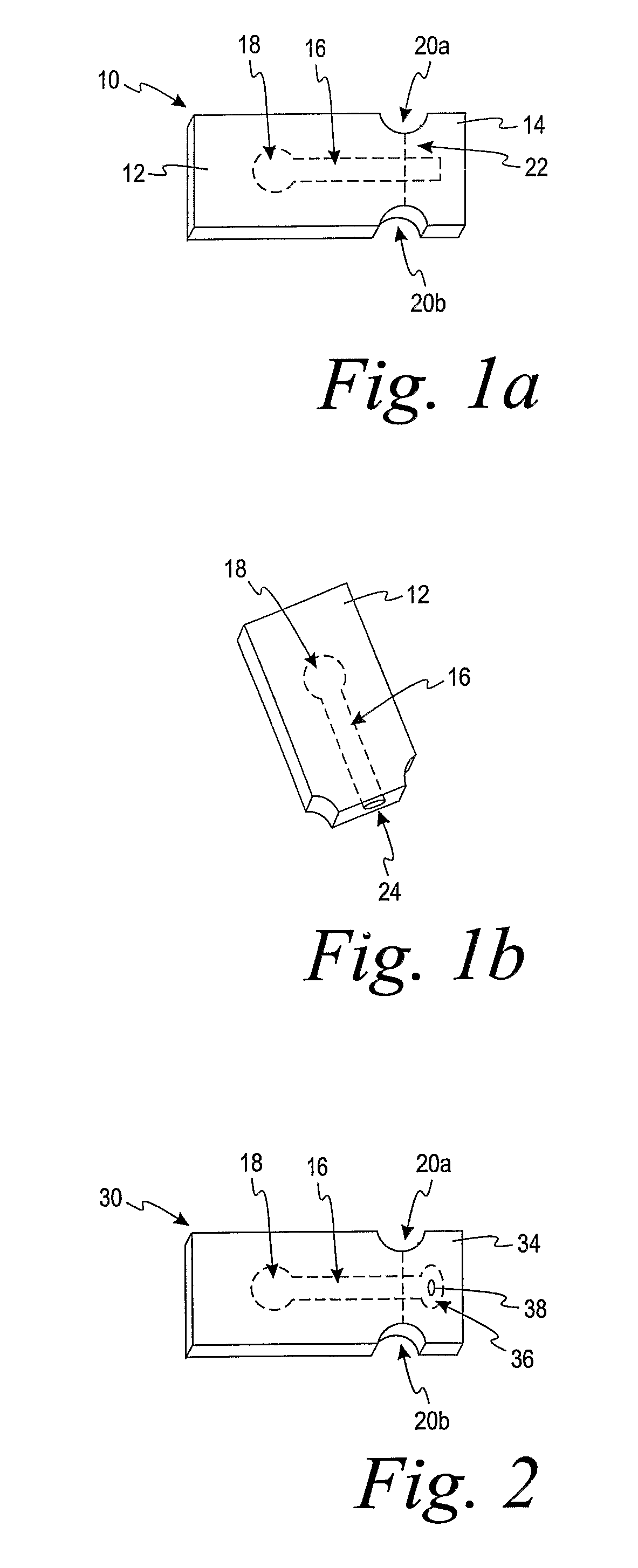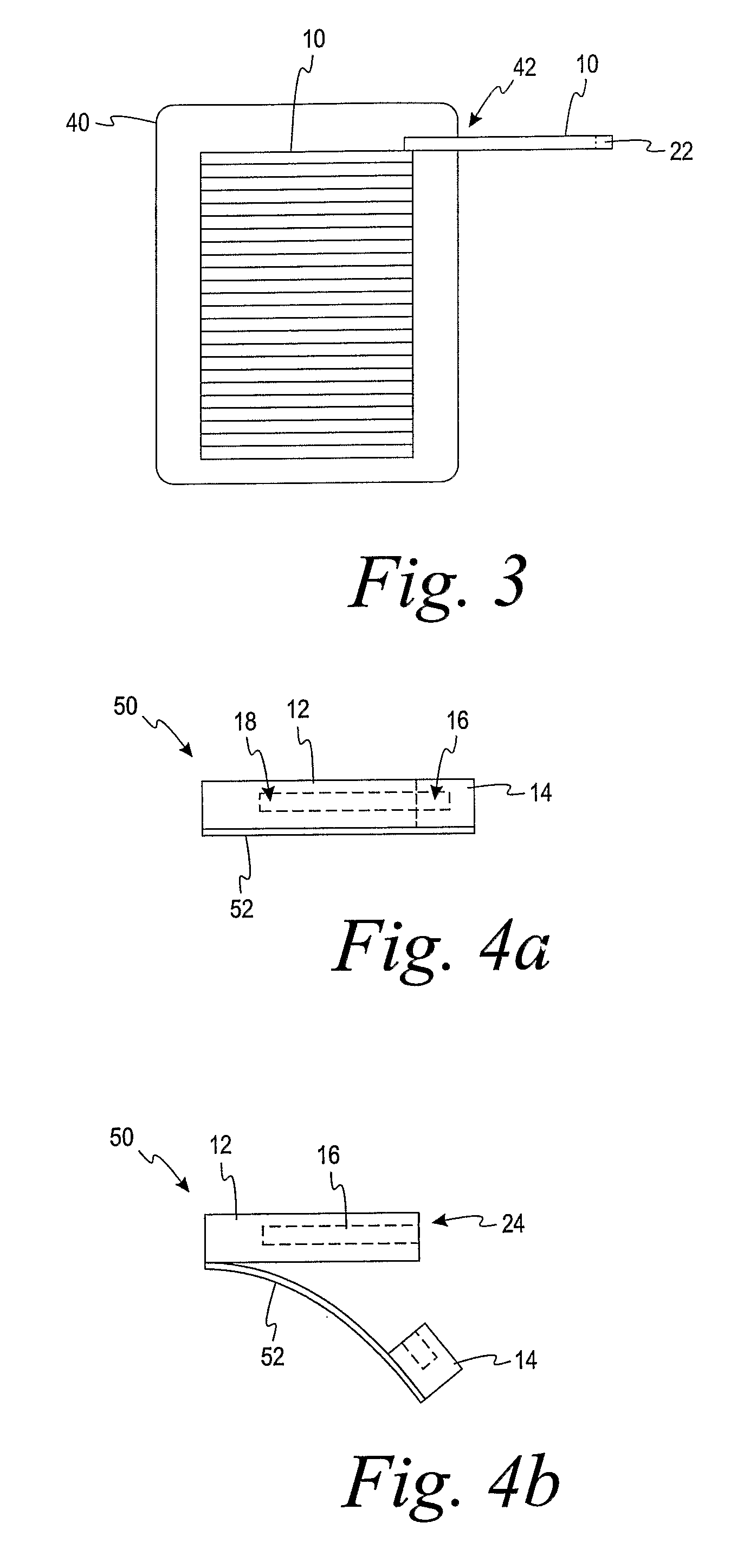Self-Contained Test Sensor
a self-contained, test sensor technology, applied in the field of diagnostic instruments, can solve the problems of generating a lot of trash, unable to automatically move or discard the strip with a device, and the insufficient sealing of the package once the first test strip is removed,
- Summary
- Abstract
- Description
- Claims
- Application Information
AI Technical Summary
Benefits of technology
Problems solved by technology
Method used
Image
Examples
embodiment a
Alternative Embodiment A
[0080]A test strip to assist in determining the concentration of an analyte in a fluid sample, comprising:
[0081]a base including a capillary channel and a test element, the capillary channel being in fluid communication with the test element, the test element being adapted to receive the fluid sample;
[0082]at least one tab removably attached to the base, the capillary channel extending from the base into a portion of the tab; and
[0083]a break line intersecting the capillary channel, wherein an inlet to the capillary channel is exposed along the break line when the tab is separated from the base.
embodiment b
Alternative Embodiment B
[0084]The test strip of Alternative Embodiment A further comprising at least one recess located between the base and the at least one tab, the at least one recess being adapted to facilitate the separation of the at least one tab from the base along the break line.
embodiment c
Alternative Embodiment C
[0085]The test strip of Alternative Embodiment B further comprising a second recess located between the base and the at least one tab opposite the at least one recess, the at least one recess and second recess facilitating the separation of the at least one tab from the base along the break line.
PUM
 Login to View More
Login to View More Abstract
Description
Claims
Application Information
 Login to View More
Login to View More - R&D
- Intellectual Property
- Life Sciences
- Materials
- Tech Scout
- Unparalleled Data Quality
- Higher Quality Content
- 60% Fewer Hallucinations
Browse by: Latest US Patents, China's latest patents, Technical Efficacy Thesaurus, Application Domain, Technology Topic, Popular Technical Reports.
© 2025 PatSnap. All rights reserved.Legal|Privacy policy|Modern Slavery Act Transparency Statement|Sitemap|About US| Contact US: help@patsnap.com



